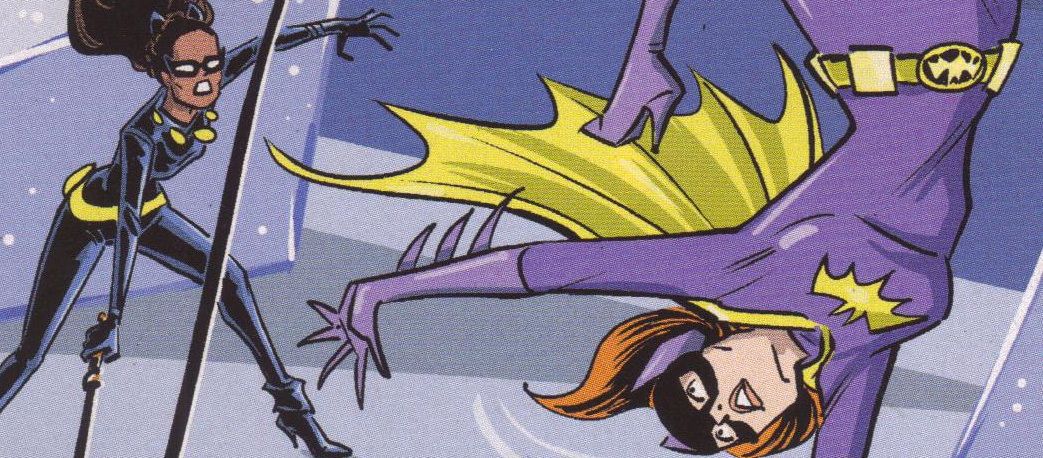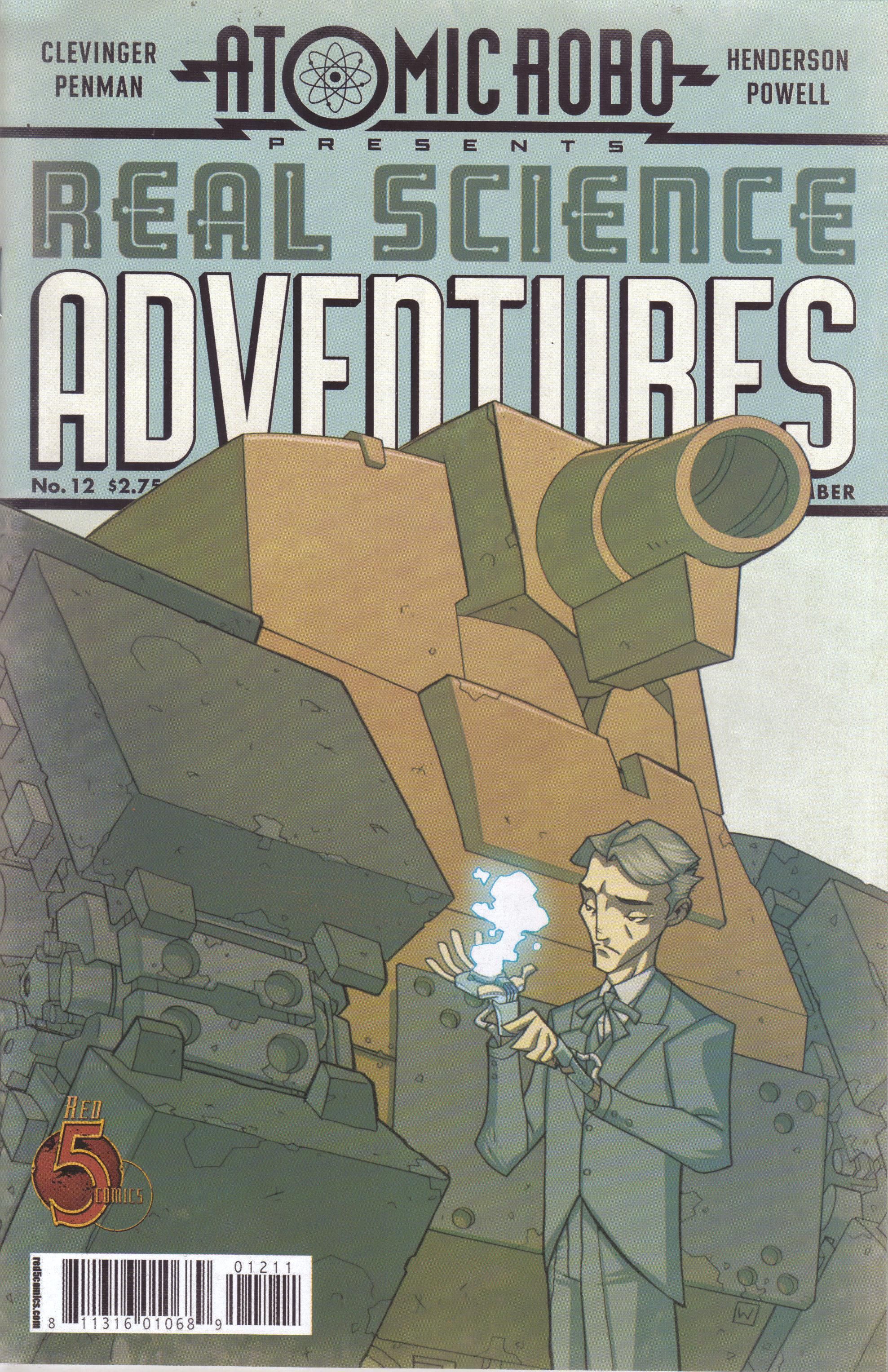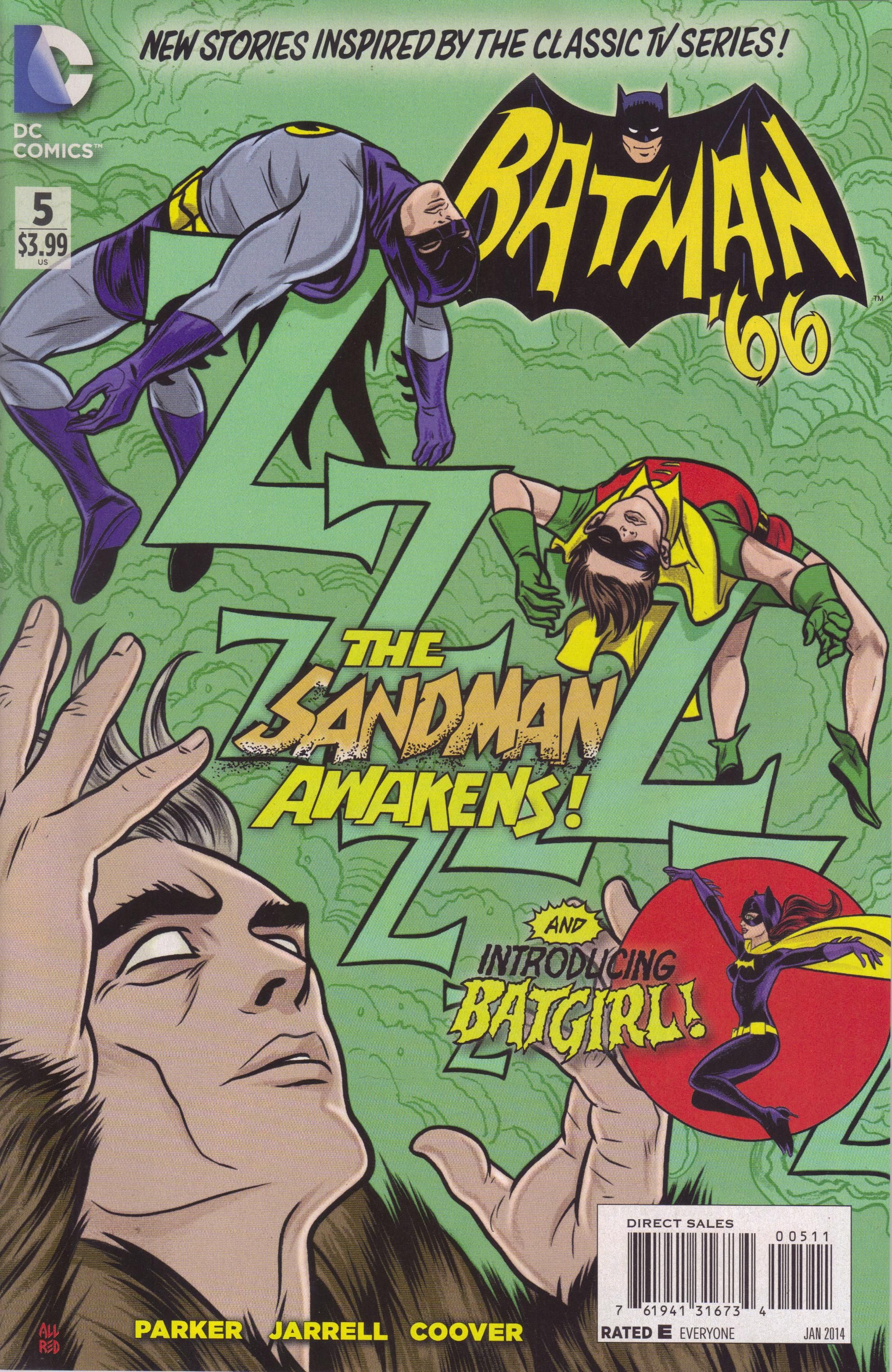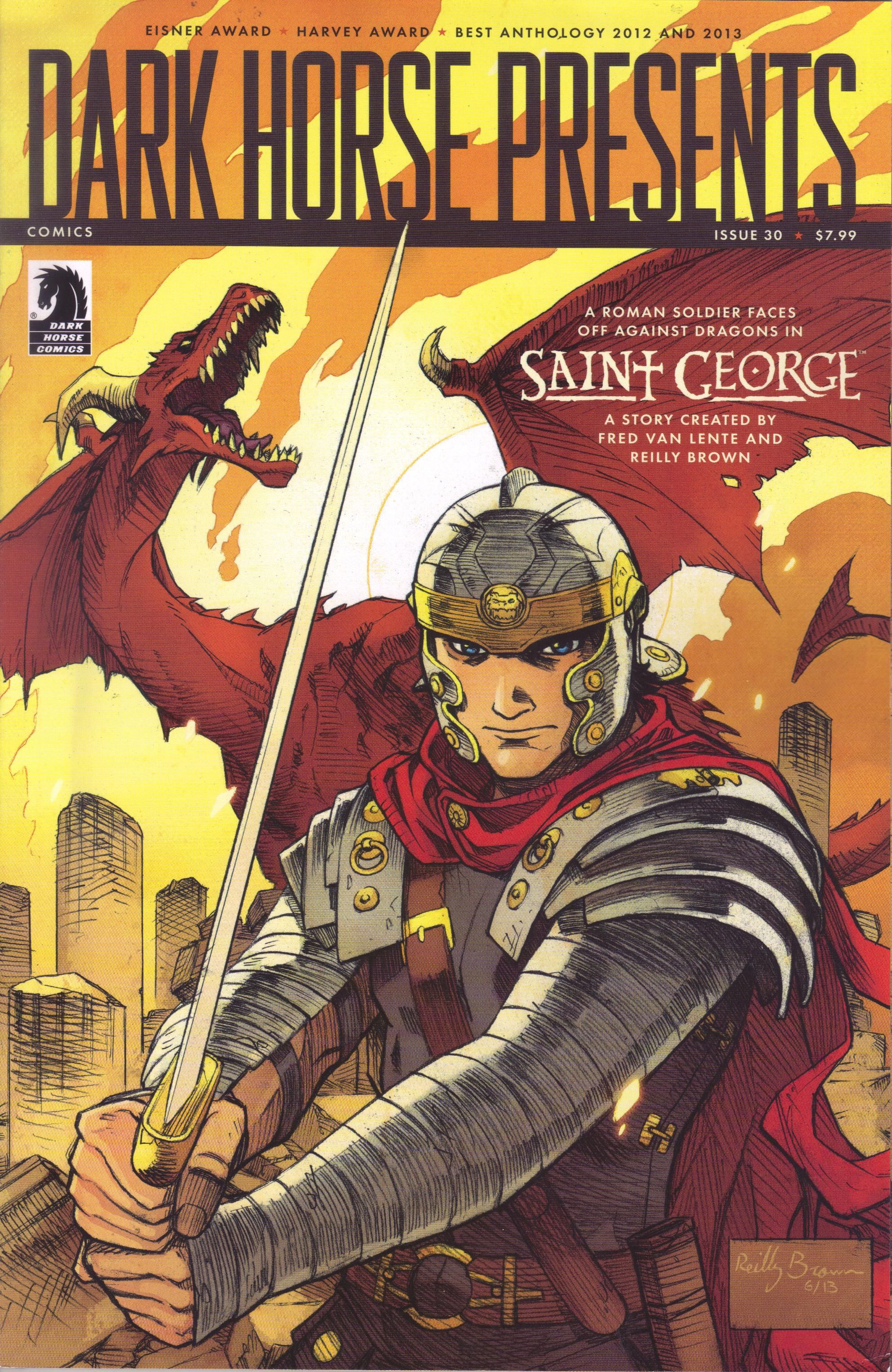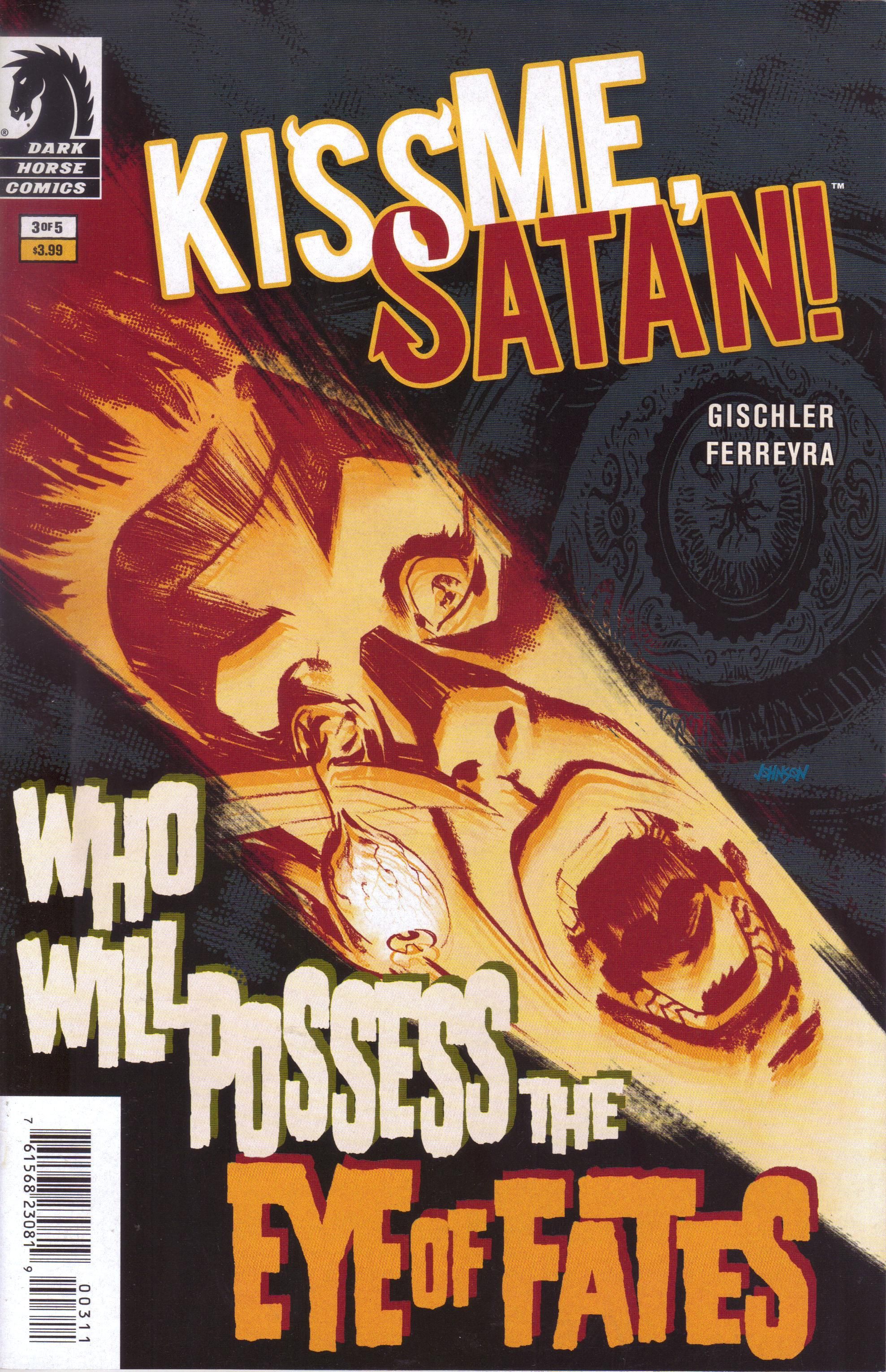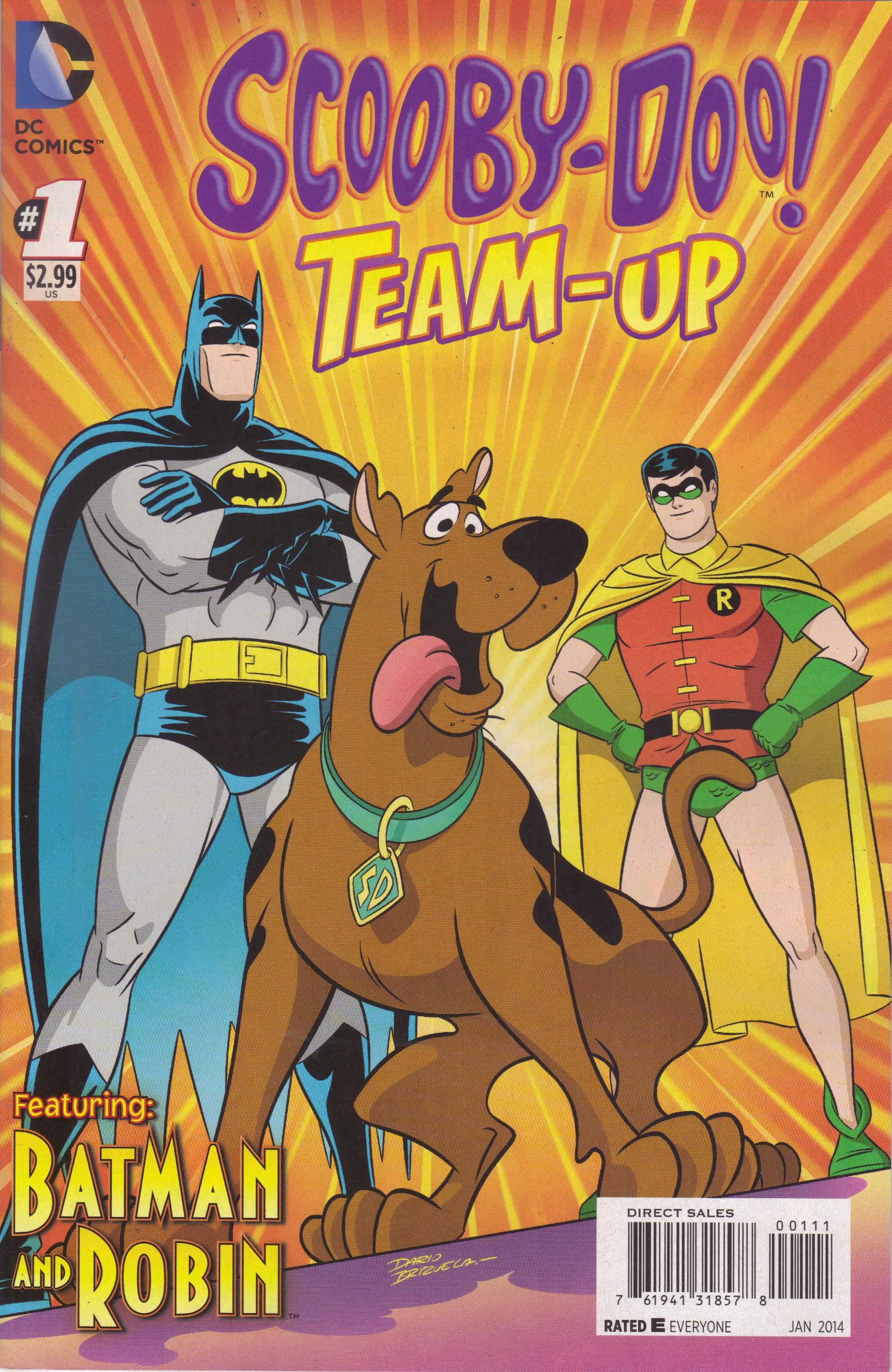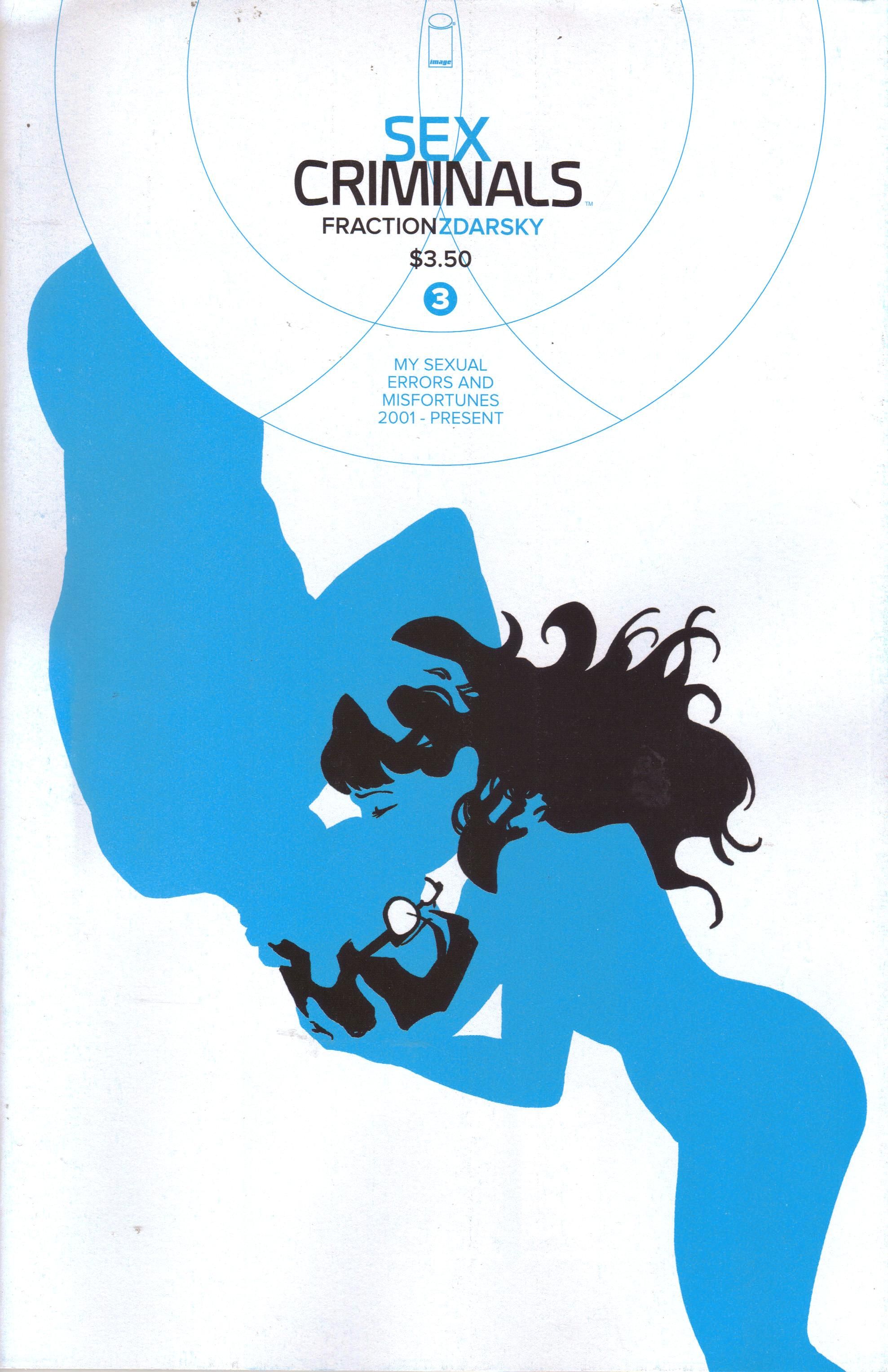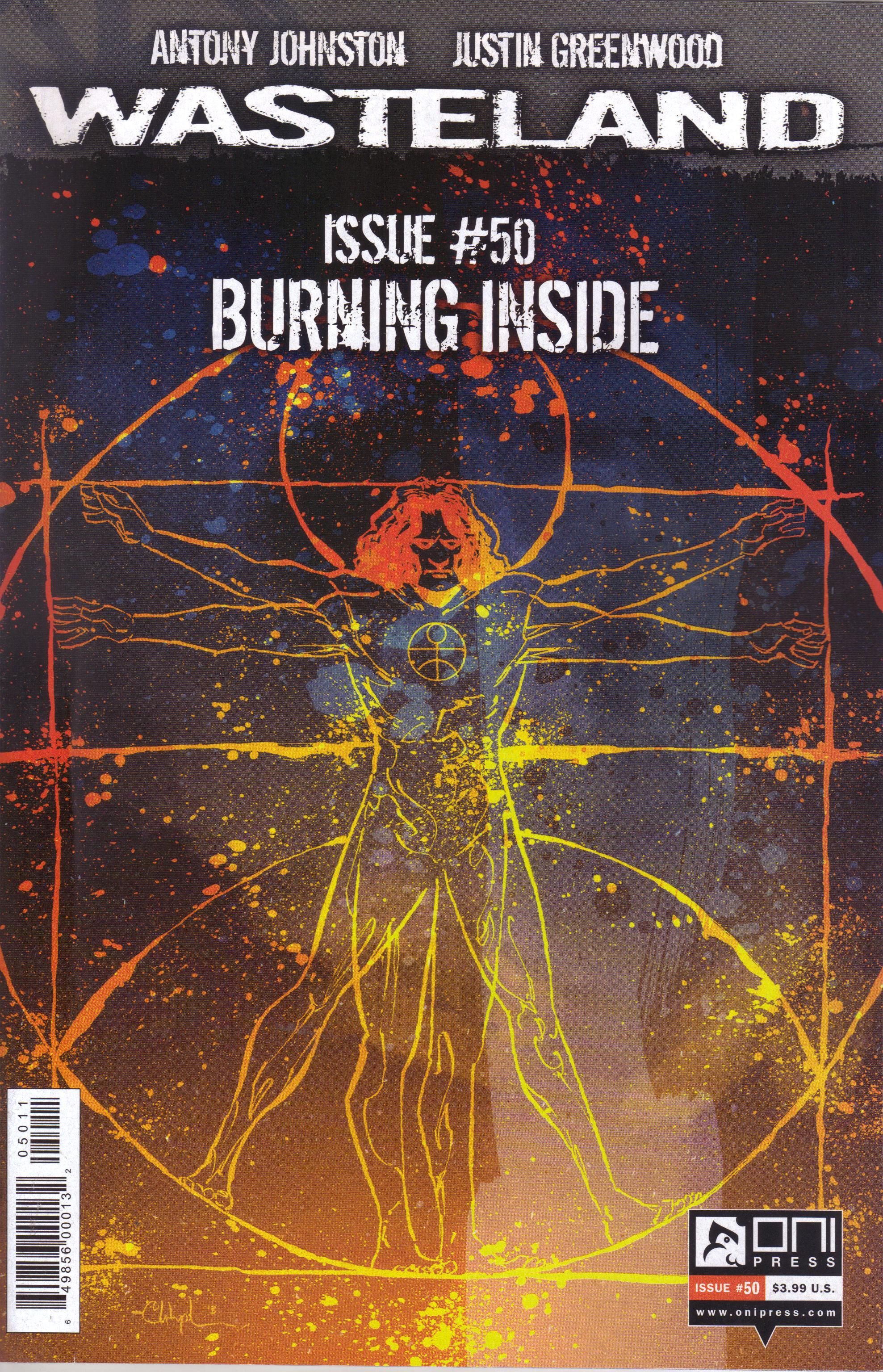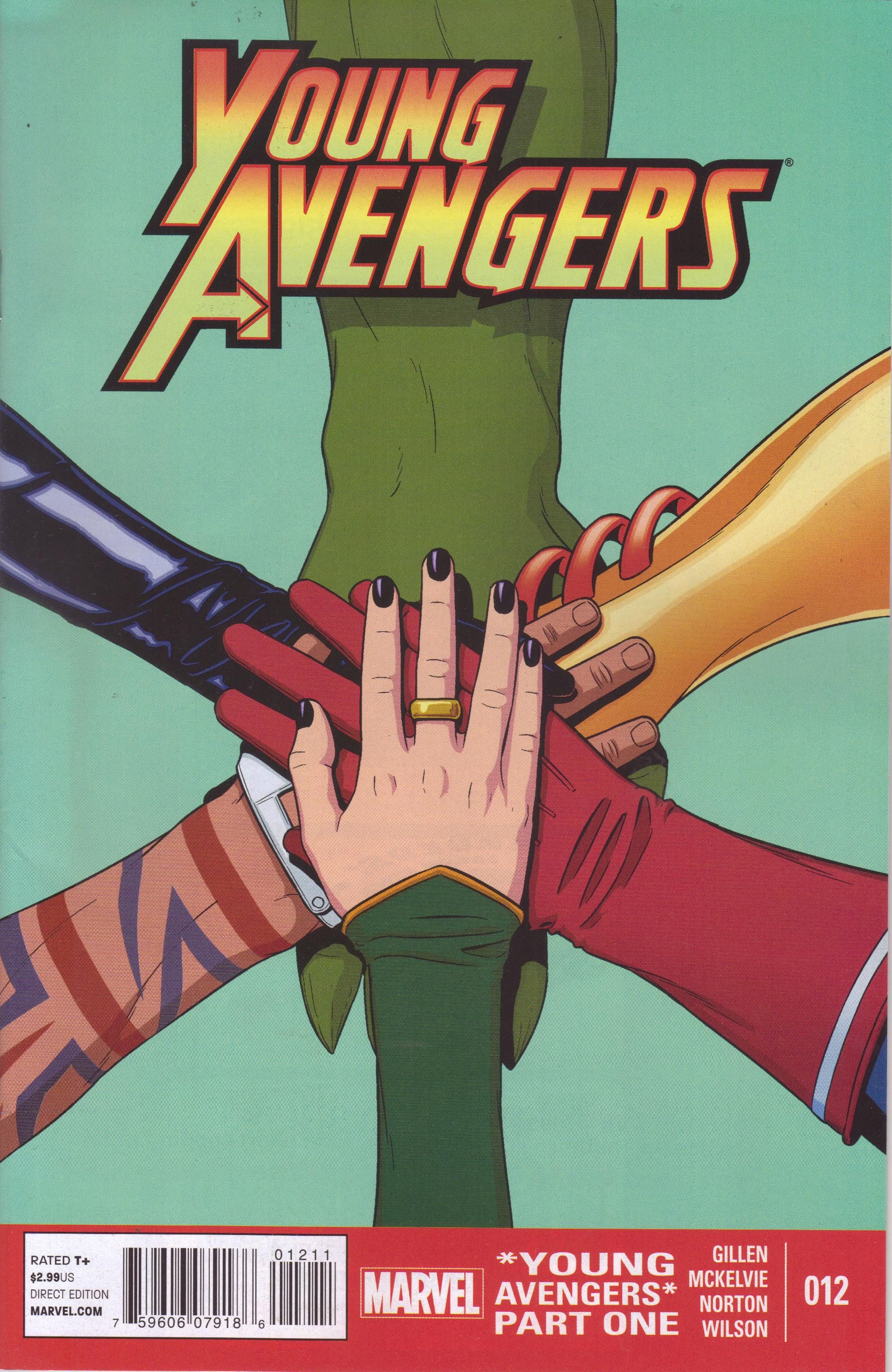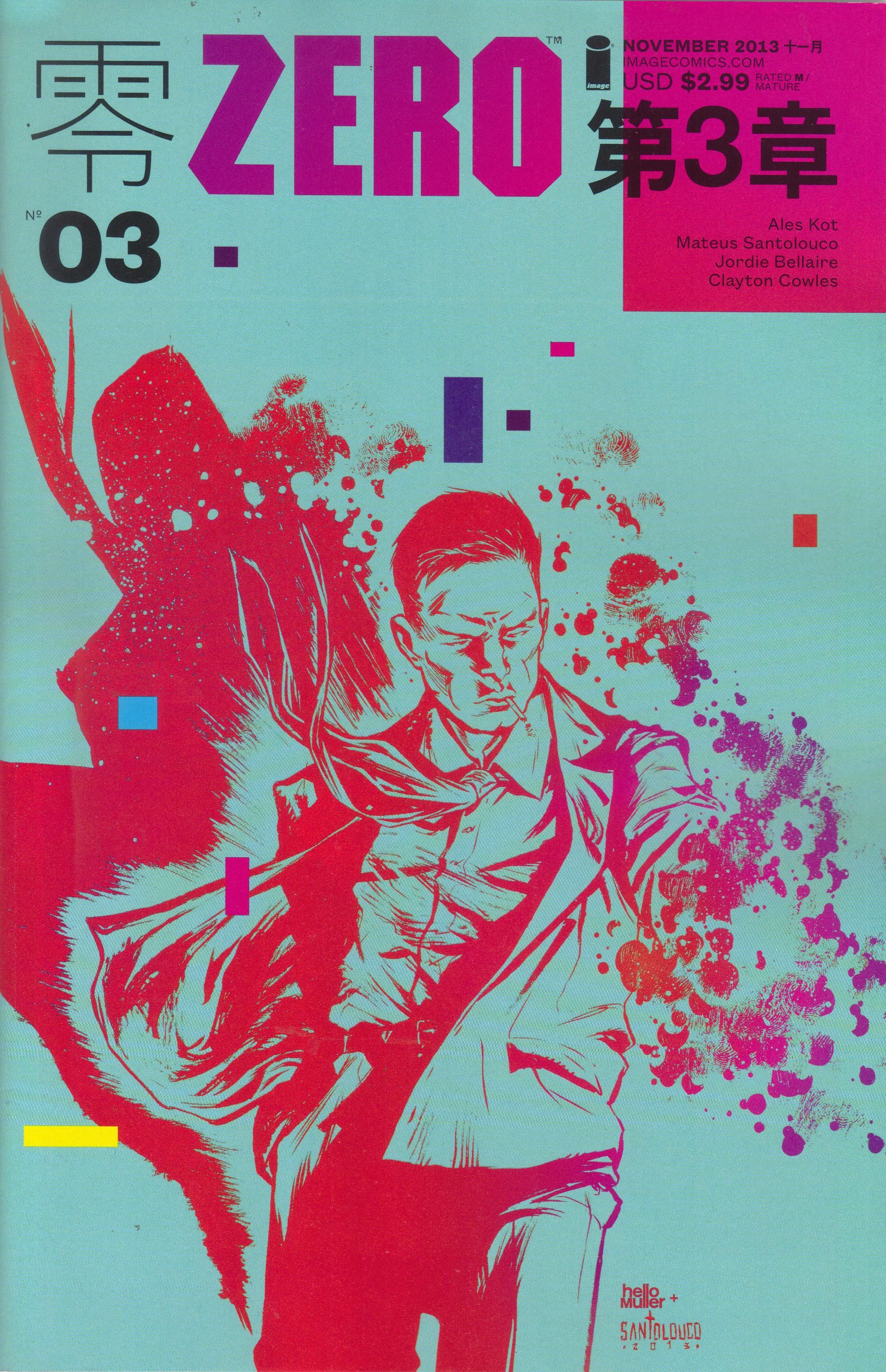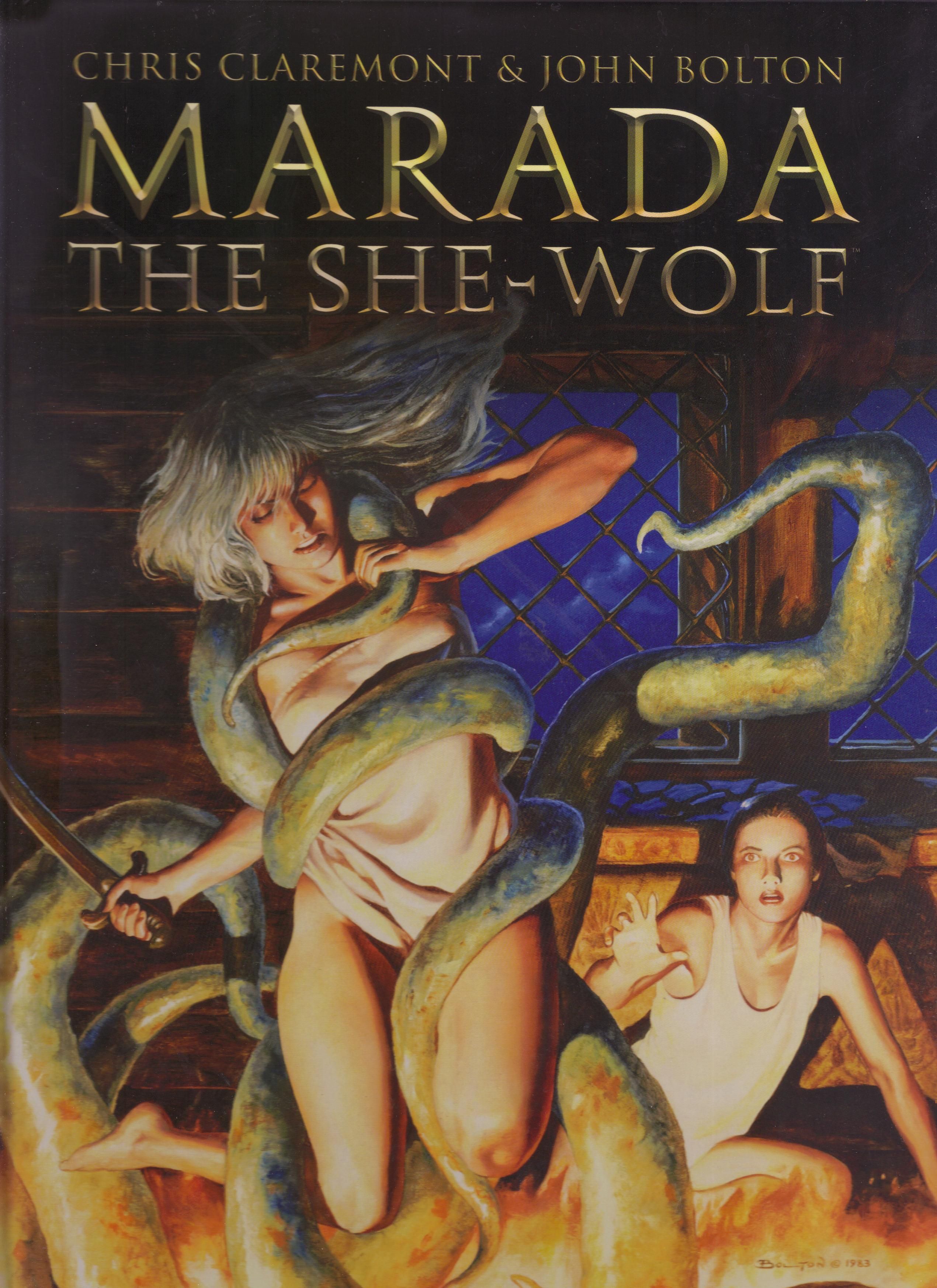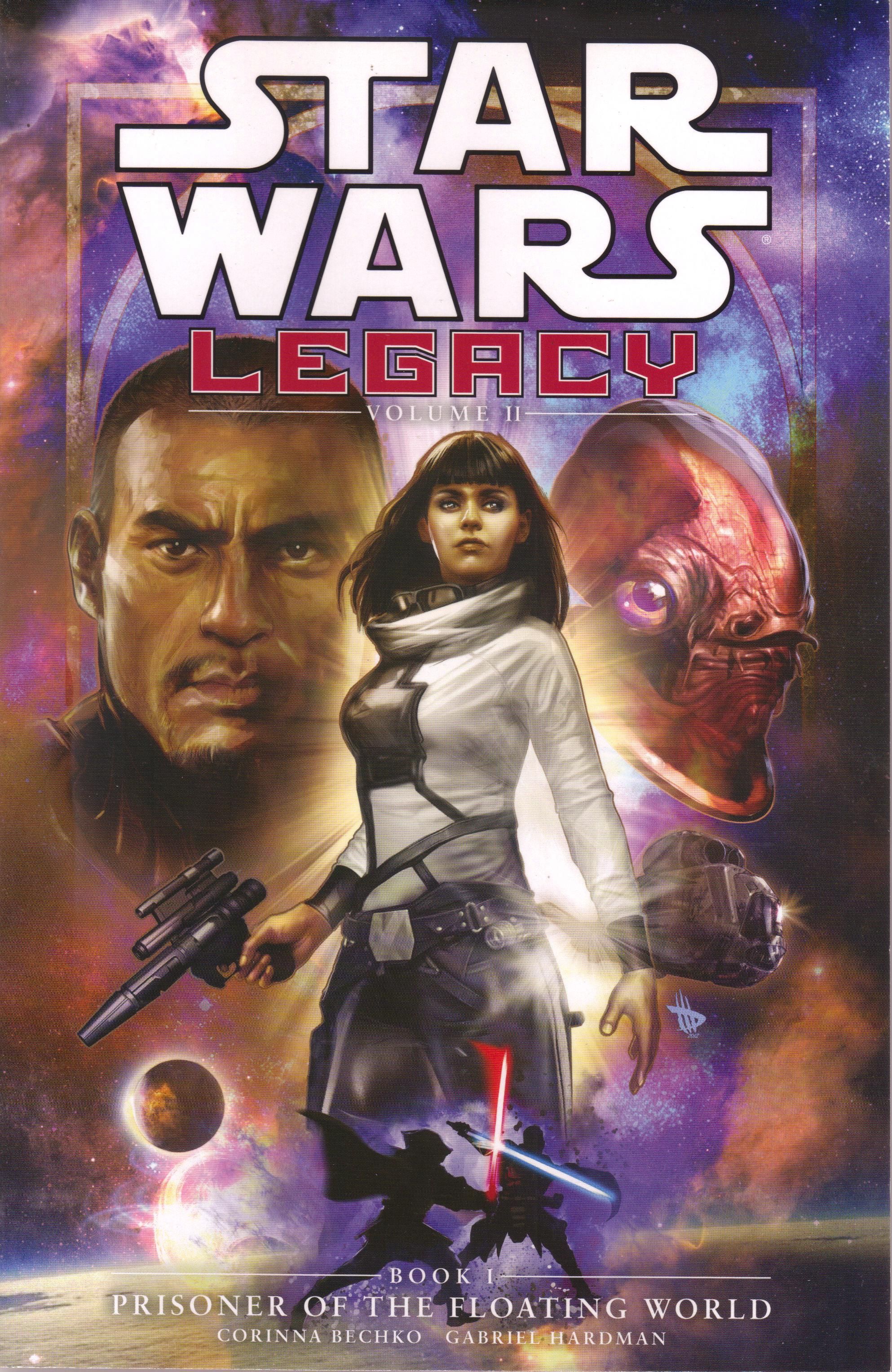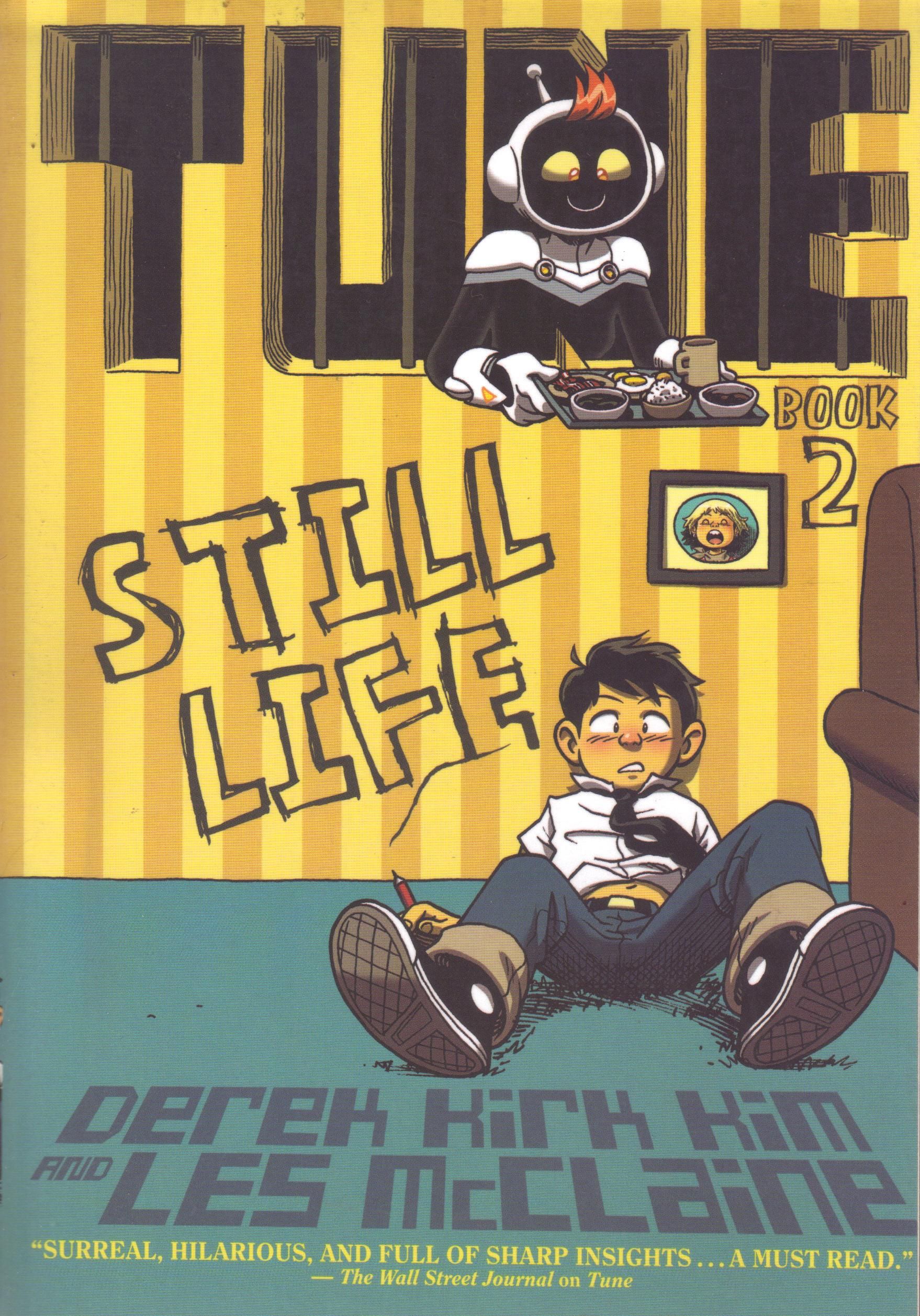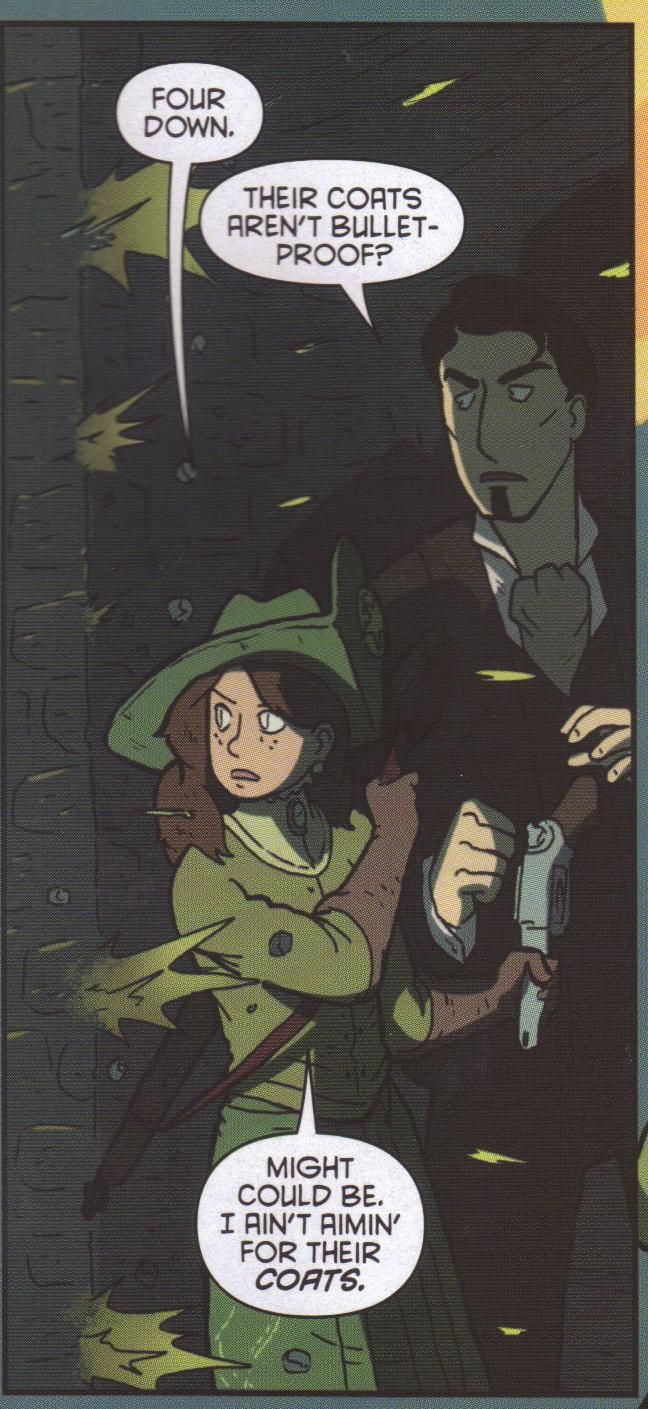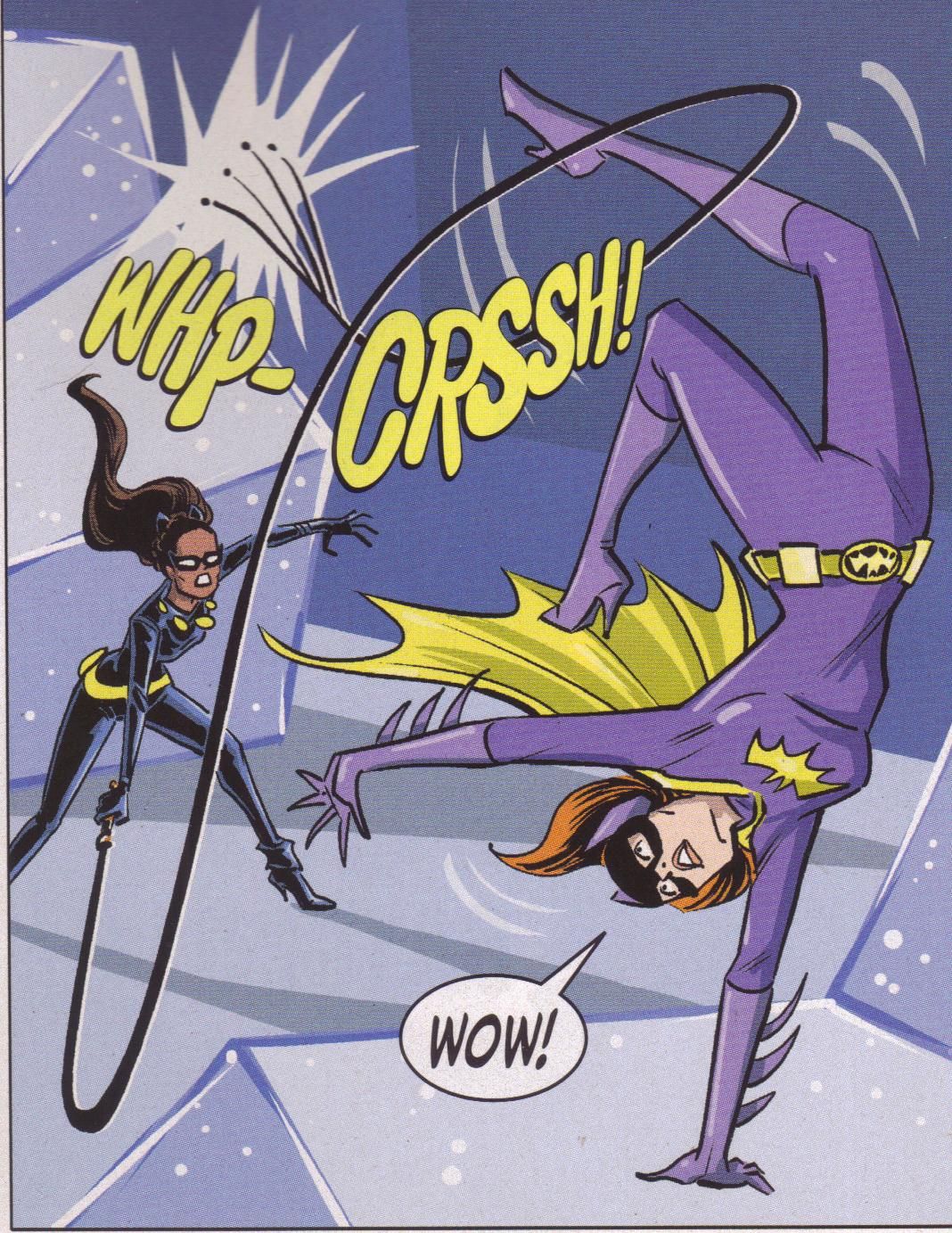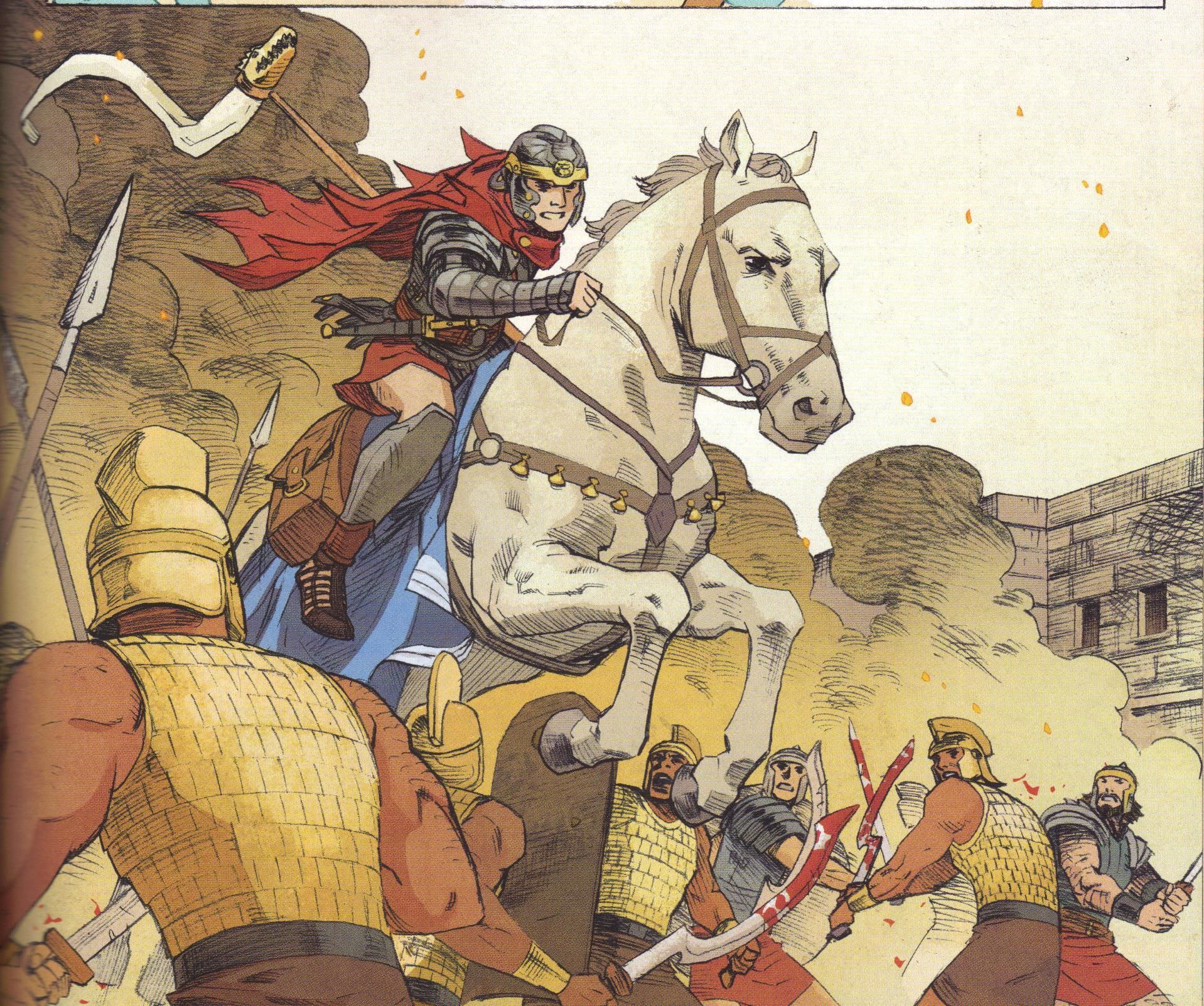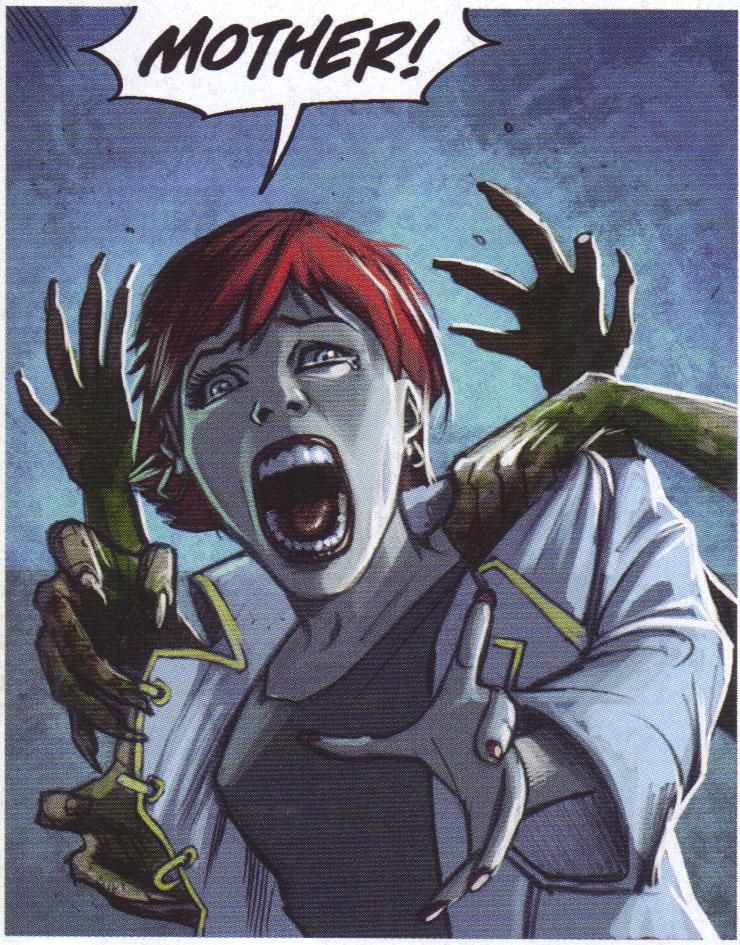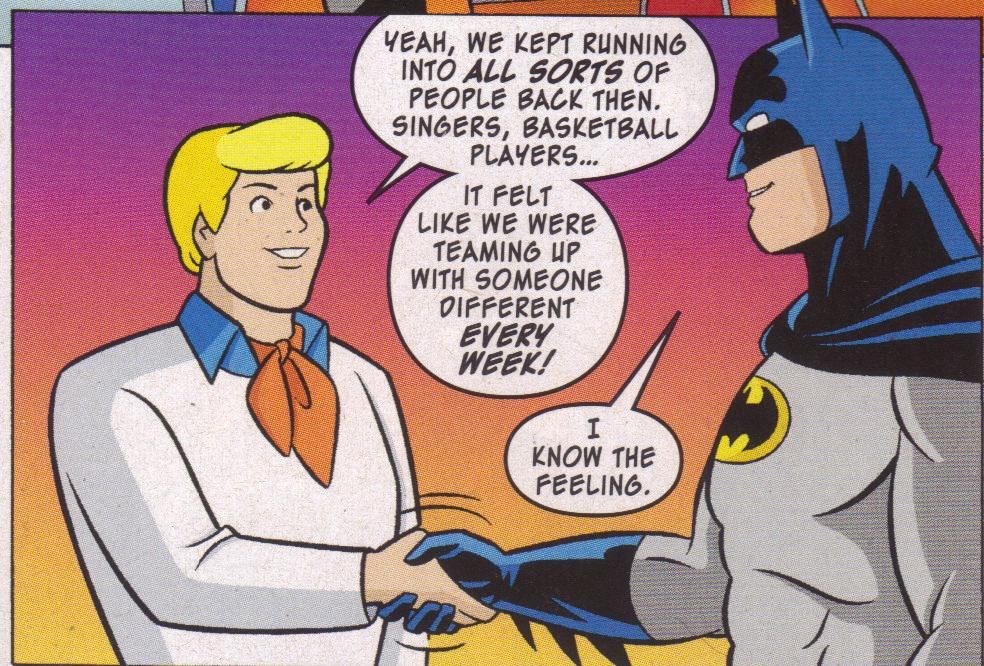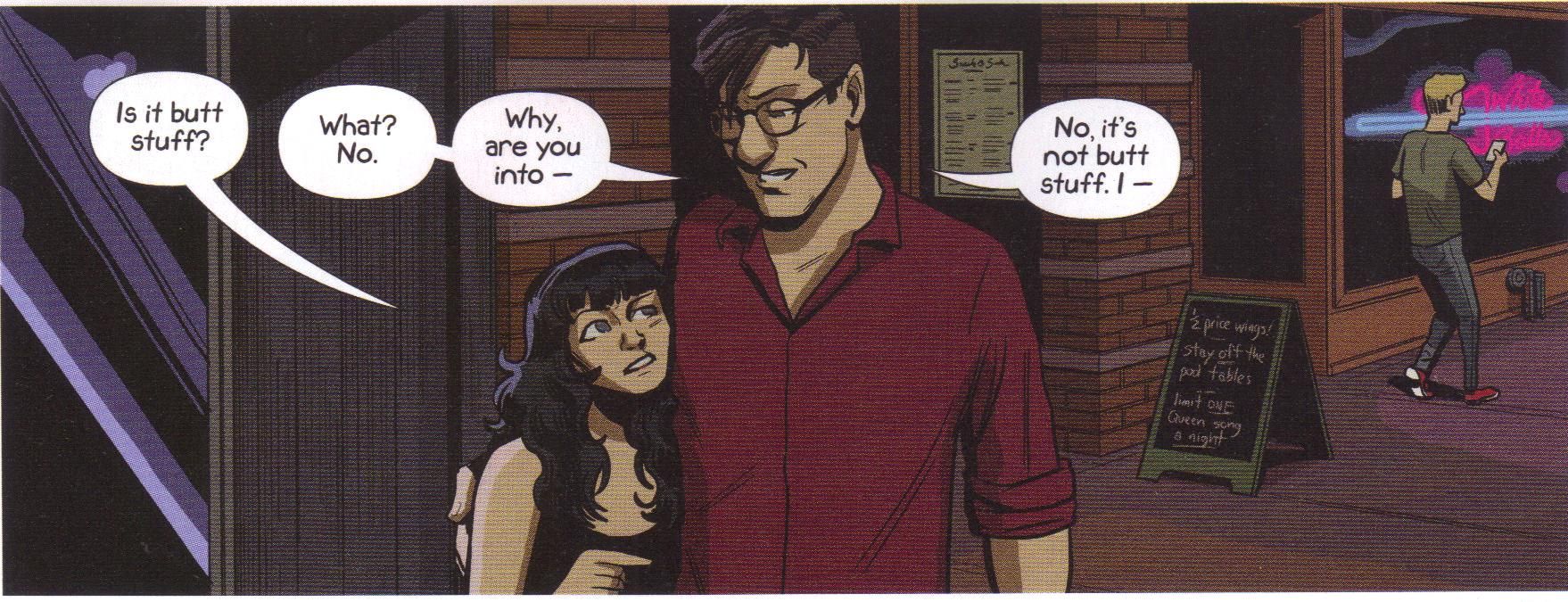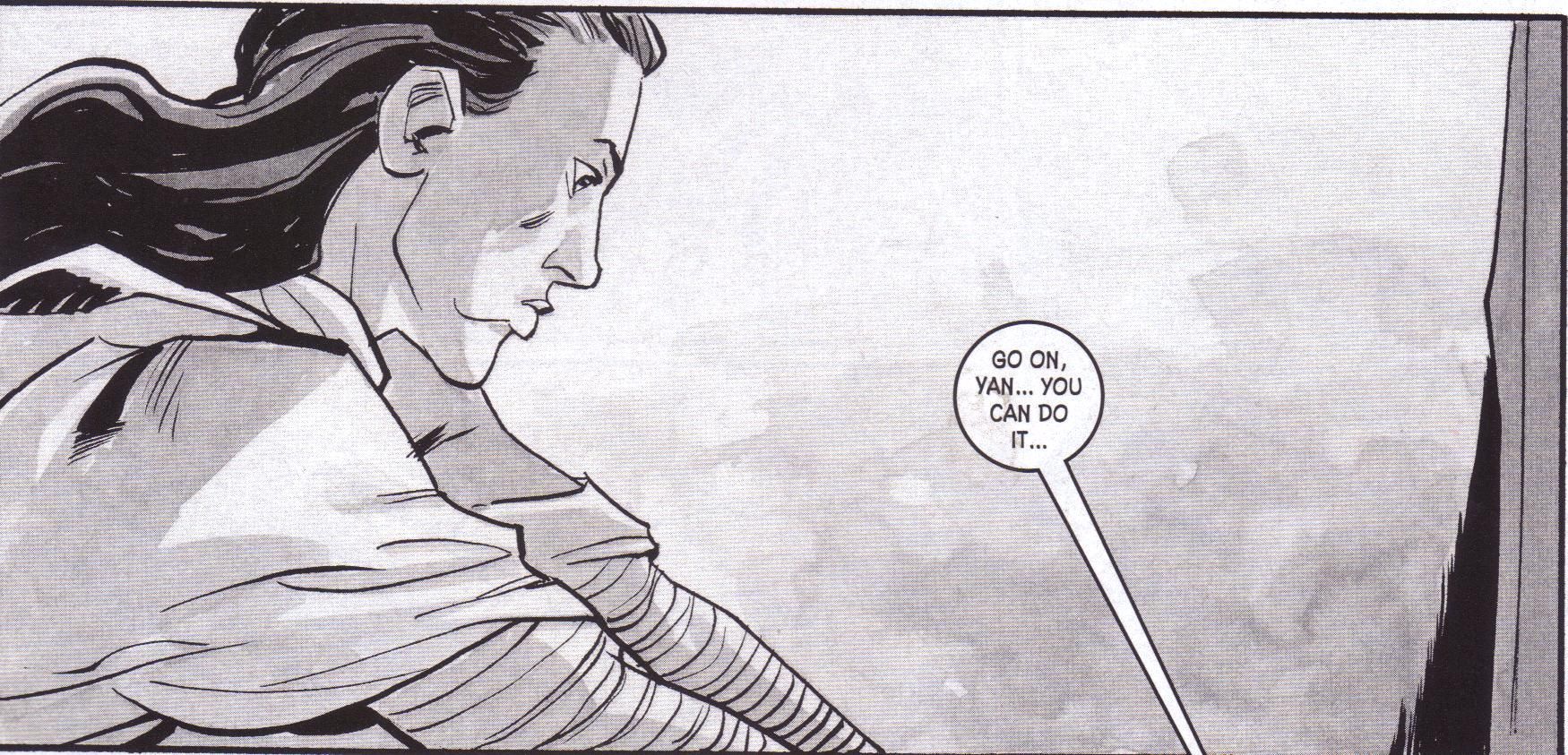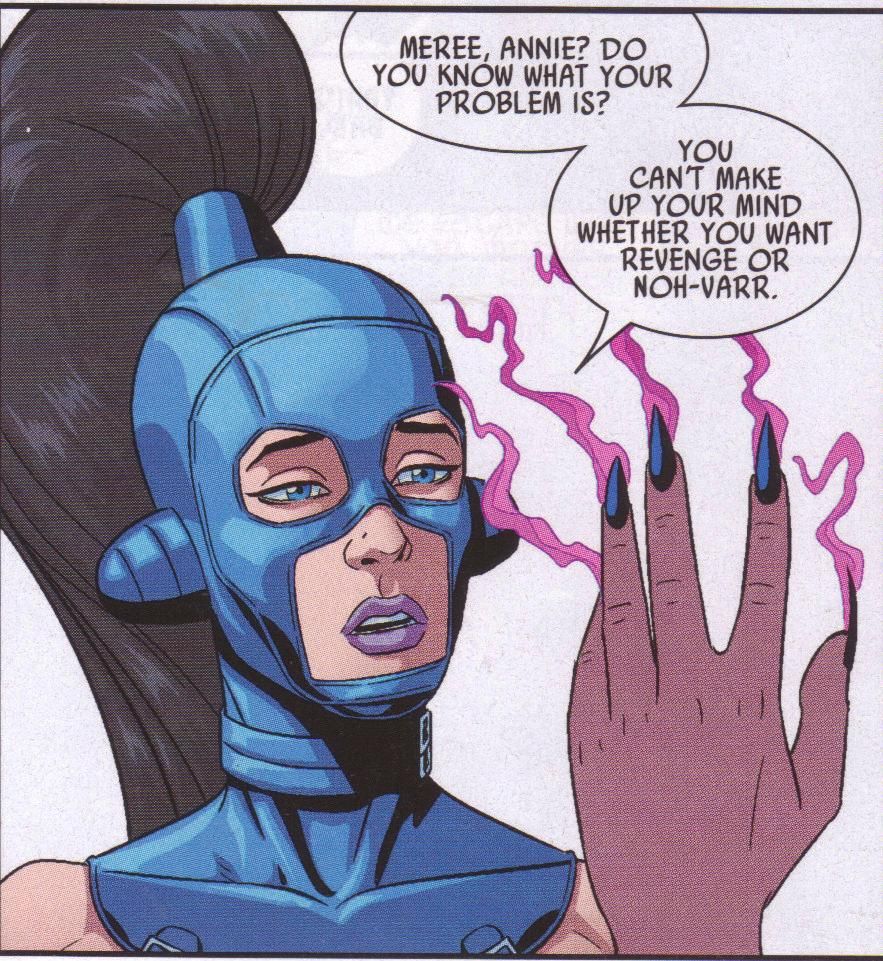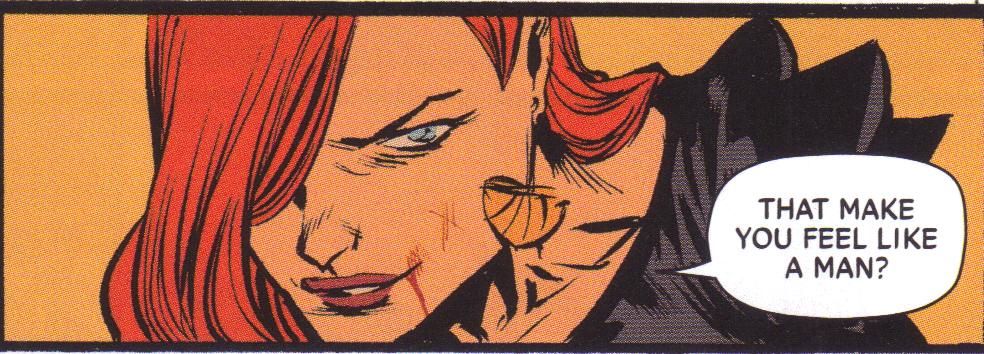"This is what history consists of. It's the sum total of all the things they aren't telling us." (Don DeLillo, from Libra)
Atomic Robo: Real Science Adventures #12. Main story by Brian Clevinger (writer), Erica Henderson (colorist), M. D. Penman (artist), Jeff Powell (letterer); "The Getaway" by Brian Clevinger (writer), Jeff Dellagatta (artist), Jeff Powell (letterer), Rico Renzi (colorist); Dr. Dinosaur story by Eric Allred (artist), Brian Clevinger (writer), Jeff Powell (letterer); and Lee Black (editor). $2.75, 24 pgs, FC, Red 5 Comics.
Real Science Adventures finishes up the big story of the evil industrialists trying to take over the country and the noble industrialists (and others) trying to stop them. It's not bad, but it is just a fun adventure story, if that's your thing. In the two back-up stories, Robo nabs some bad guys and Dr. Dinosaur chases some scientists off his island. They're both cute, short little tales.
I haven't loved Real Science Adventures, even though it's not a bad comic (and I don't know if Clevinger will have more issues, so there's that). As it's the companion title of the main book, it fills in some of the "Robo-verse" that Clevinger and Wegener are playing with in the main title, but it's never been as good as that one. Part of it is the art - none of the artists have as good a grasp on the character work and the storytelling as Wegener does. Penman's work on the main story of this issue is fine, but it lacks the spark of Wegener's crisp lines, and Penman's work isn't as dynamic as Wegener's. Allred's art on the Dr. Dinosaur story is odd, as he combines computer-rendered painting with tight pencils somewhat clumsily, so the whole doesn't look as integrated as it probably should. I've mentioned before how digital coloring has not found a happy medium with print, as often coloring that looks fine on a screen is too dark on paper, and that's the case with the main story, in which several pages are far too dark. Clevinger is to blame a bit, too, as he takes his main character off the table for most of these stories, and he's so good at writing Robo that the stories suffer by his absence. There's nothing wrong with his writing of Annie Oakley or Charles Fort, but they don't have as vibrant a personality as Robo, so they all tend to become plot devices. It's not a surprise that the brief story with Robo in this issue is the best one, because Clevinger is so good at writing him. Without him in the first story, it's a decent adventure about late 19th-century moguls trying to overthrow the government (although in the 1890s industrialists did rather well and didn't need to overthrow the government; President Cleveland actually begged J. P. Morgan to save the government from default, and Morgan obliged, making scads of money in the process), but it doesn't have any resonance. It's just a nice little story.
I don't know if this series will continue at any point, but I'll probably skip it when it does. I still love Atomic Robo (and I wish it would come out a bit more often!), but this series doesn't really work. Oh well.
Rating: ★ ★ ★ ★ ★ ½ ☆ ☆ ☆ ☆
One totally Airwolf panel:
Batman '66 #5 ("The Sandman Says Good Night"/"Tail of the Tiger Topaz") by Wes Abbott (letterer), Colleen Coover (artist/colorist, "Topaz"), Jeff Parker (writer), Rubén Procopio (artist, "Sandman"), Matthew Wilson (colorist, "Sandman"), Aniz Ansari (assistant editor), and Jim Chadwick (senior editor). $3.99, 30 pgs, FC, DC. Batman, Jim Gordon, and Catwoman created by Bill Finger and Bob Kane. Robin and Alfred Pennyworth created by Bill Finger, Jerry Robinson, and Bob Kane. Harriet Cooper created by Bill Finger and Sheldon Moldoff. Chief O'Hara created by Edmond Hamilton. Barbara Gordon created by Gardner Fox and Carmine Infantino. Eartha Kitt created by some benevolent super-being.
Batman '66 continues to be the Batman book you ought to be reading, because it's just such a fun comic. The frustrating thing about DC, as I've often written, is not that they're so goddamned grim-'n'-gritty, but that they think that's all they can be. I mean, the DiDio's announcement that their heroes can't be happily married is just a function of this, as he seems to think that people want to read comics so they can be depressed. I mean, aren't heroes supposed to win every once in a while? And doesn't that mean they might be happy occasionally? DC is actually at the vanguard of entertainment, as it turns out - have you noticed how dreary a lot of television is becoming? I'm talking hour-long "dramas," which are really tough to slog through far too often. It's one of the reasons I like Sleepy Hollow - even when they get ultra-serious, like this past week's episode where Ichabod was interrogating the Horseman and it was all very ultra-serious, the show began with Abbie showing Ichabod how to do a fist-bump and Ichabod saying how ridiculous it was. The point is - television is turning into DC Comics, so maybe DiDio was onto something so many years ago when he declared the Death of Fun. But just because I like watching ultra-serious television dramas doesn't mean I don't like Brooklyn Nine-Nine, which is freaking hilarious (Terry Crews FTW!!!!). Just because I occasionally like super-depressing Batman comics doesn't mean every single comic you publish should feature someone getting decapitated or raped or both. Yet DiDio continues to think that's what it means. "Hey, that one comic where we killed all those heroes was popular, so let's keep doing it!!!!" Sheesh.
Anyway, what was I talking about? Oh, yeah, Batman '66. Are all the stories great? No, of course not. But they're all solid Batman stories, and as I pointed out when I wrote about the first issue, there's really nothing keeping them from being "real" Batman stories if they were tweaked just a bit. The Batman who zips around fighting the Sandman in the first story of this issue and the Batgirl who thwarts the Eartha Kitt Catwoman in the second story could easily fit into the "regular" DCnU, but DiDio wouldn't allow it because of one thing: the lack of angst in these stories. The Sandman has a clever scheme, Batman figures it out, Batman gets captured, Batman uses his steely will to overcome the Sandman. Simple, right? Take the two panels with Aunt Harriet out, change the art so Bats doesn't look like Adam West, and this is a "regular" Batman solving crimes. But there's no goddamned angst. When the Sandman forces Batman to dream (so the villain can discover where the Batcave is), you know what Batman doesn't dream about? His goddamned parents getting gunned down. It's so nice to have a tiny "introspective" moment with Batman and not see that moment. It's one of the few reasons I prefer TV Batman over Comics Batman - Adam West didn't do what he did because his parents were slaughtered, he did it because it wanted to be a good dude. Yes, he's a square, but he just wants to make the world better. Comics Batman can be a bit of a downer. You know he's always screwing up the Justice League Christmas parties!
Procopio's art is decent enough, but Coover gets to draw the back-up story, and more Coover is always a good thing. There's no way in hell, of course, that DC would ever let Coover near one of their comics, especially a Batman comic, because her style itself is inimical to DC's house style. There are no dark colors in Coover's story, even in the nighttime scenes, and Batgirl's costume is a bright purple, with Coover understanding the concept of complementary colors by using the purple offset with a poppy yellow of her cape, insignia, and belt. These days Batgirl's dominant color is black, because of course it fucking is. DiDio would kill his puppy before he lets Coover draw the "real" Batgirl, because if he did that, people might begin to think Barbara Gordon actually enjoys being a superhero.
See what a comic like Batman '66 does to me? Damn you, Parker and collaborators!!!! Stop giving me hope that DC might not always be super-depressing in the future!!!!
Rating: ★ ★ ★ ★ ★ ★ ★ ☆ ☆ ☆
One totally Airwolf panel:
Dark Horse Presents #30. "Saint George: Dragonslayer Chapter 1" by Jordie Bellaire (colorist), Reilly Brown (artist), Dave Lanphear (letterer), Fred van Lente (writer); "Integer City Chapter 1: Power in the Blood" by Jean-François Beaulieu (colorist), Crank! (letterer), Jamie S. Rich (writer), Brent Schoonover (artist); "The Adventures of Nilson Groundthumper and Hermy: The Re-Return of the Wizard" by Tom Luth (colorist), Stan Sakai (writer/artist/letterer); "Alabaster: Boxcar Tales Chapter 11" by Caitlín R. Kiernan (writer), Steve Lieber (artist/letterer), Rachelle Rosenberg (colorist); "Nexus: Into the Past Chapter 5" by Mike Baron (writer), The Dude (artist/letterer), Glenn Whitmore (colorist); "Monstrous: Dirty Work After the Apocalypse, Part 1" by Ryan Cody (artist), Steve Horton (writer/letterer); "Crime Does Not Pay: City of Roses Chapter 8" by Bill Farmer (colorist), Nate Piekos (letterer), Patric Reynolds (artist), Phil Stanford (writer); "Mr. Monster: Dark Stearn Chapter 4" by Ken Bruzenak (letterer), Janet Gilbert (co-plotter), Michael T. Gilbert (writer/artist/colorist); "The Strain: The Fall - The Silver Angel Chapter 3" by David Lapham (writer/artist), Lee Loughridge (colorist), Clem Robins (letterer); "Now & Then" by Chad Lambert (writer), Tom Williams (artist/letterer); Jim Gibbons (associate editor), Brendan Wright (contributing editor), Daniel Chabon (contributing editor), Chris Warner (contributing editor), and Sierra Hahn (contributing editor). $7.99, 79 pgs, FC, Dark Horse.
DHP is always something of a rattle bag of comics, but that's not surprising. This is a slightly weaker issue, mainly because some of the longer-running serials aren't as good as some that have been featured before. I'm just not really a fan of Kiernan's "Alabaster," so while I always like seeing Lieber's art (like, say, in a commercial), it's just not doing it for me; "Crime Does Not Pay" is kind of miserable; and I have no interest in "The Strain" even when Lapham's writing and drawing it. So that's a lot of pages that don't really work for me. Anything Nexus is always odd, because Baron is such a bizarre writer, but the Dude's art is so beautiful that I forgive a lot of the eccentricities of the story. However, we do get a charming little Sakai story, which is always nice, and a new sci-fi story about a human who has somehow turned into one of the aliens that invaded Earth and took over, so that could be interesting. The other two new features are the first two stories in the book, and they're by far the best ones in this issue. Van Lente and Brown set their story in 297 CE in Egypt, and George ("Draconarius Georgius") is a Roman soldier fighting against a rebel who has proclaimed himself Pharaoh. He is tasked with saving the dragon standard of the legion before the rebel can take the walls and seize it, so he heads out toward Libya, where the reinforcements are. Oh, he's also a secret Christian, as this is during a time when Christians weren't exactly that popular in the empire. It's just a set-up, but van Lente gets all the particulars out of the way and Brown is a fine artist, so it's a rousing start. Rich's "Integer City" story is a noir detective tale in a retro-futuristic town, which isn't that original, but the script already has some nice twists in it, and Schoonover detailed art and Beaulieu's lush coloring make the city come to life nicely. I'm looking forward to the next installments of both of these stories.
Geof Darrow provides some illustrations, as he normally does. I mention that only to bring up the latest issue of Shaolin Cowboy. Did anyone see it? I'm not buying the single issues because I don't want to get old waiting for them to come out, but if you haven't seen the latest issue, you really ought to check it out. It has to be one of the most maddening issues in comics history. I mean, how did you feel if you bought it and realized what it was? I'd be a bit pissed, I think.
Anyway, Dark Horse Presents is always worth it, but sometimes it's a bit less worth it than others. This is one of those times. Oh well.
Rating: ★ ★ ★ ★ ★ ★ ½ ☆ ☆ ☆
One totally Airwolf panel:
Kiss Me, Satan #3 (of 5) by Juan Ferreyra (artist/colorist), Eduardo Ferreyra (color assistant), Victor Gischler (writer), Nate Piekos (letterer), Shantel LaRocque (assistant editor), and Daniel Chabon (editor). $3.99, 22 pgs, FC, Dark Horse.
As I mentioned when issue #1 came out, the only reason I picked this up is because Juan Ferreyra is drawing it, but it hasn't been a bad story, either. In this issue, Gischler gets a bit more gruesome, as a few characters meet grisly fates, and there's some impromptu eye surgery. Nothing like some old-fashioned eye-gouging to make your reading experience more enjoyable!
While the small plot twist in this book is a bit disappointing, Gischler does delve into who Barnabus - the nominal hero - really is, as we get a glimpse of his true nature in this issue. He hinted around about it in the first issue, but we get a bit more, and the struggle Barnabus is going through is far more interesting than the whole werewolf main plot. I mean, yes, the werewolves are fine and all, but in the final two issues of the series, I have a feeling that the way Barnabus reacts to them is going to be more interesting than their entire plot to kill the witches. Or at least I hope it is.
As usual, the art is amazing, and I don't really have much else to say about it. Ferreyra has a nice sense of humor in his artwork, so the wizard who attacks the witches and Barnabus in the cemetery is goofy but still scary. There's a truly horrific panel in this comic that Ferreyra nails, but he's also good enough to show how upset Zell is when she has to do something she doesn't want to do. He's also, of course, tremendous at all the little things, and he uses a nice lighter, sketchier touch when Zell has her vision of Barnabus, which is smart as it is, after all, a vision. I can't praise the art on the book enough, so I'll just stop.
I'm going to keep buying the series, and I do hope Gischler doesn't quite go the route I fear he will and instead is a bit more introspective, but even if he doesn't, I know the book will look superb. That's always nice.
Rating: ★ ★ ★ ★ ★ ★ ½ ☆ ☆ ☆
One totally Airwolf panel:
Scooby-Doo Team-Up #1 ("Man Bat and Robbin'") by Dario Brizuela (artist), Sholly Fisch (writer), Heroic Age (colorist), Saida Temofonte (letterer), Jessica Chen (assistant editor), and Kristy Quinn (editor). Batman created by Bill Finger and Bob Kane. Robin created by Jerry Robinson, Bill Finger, and Bob Kane. Scooby-Doo, Norville Rogers, Fred Jones, Daphne Blake and Velma Dinkley created by Joe Ruby and Ken Spears. Linda Cardellini was on Mad Men, which is somehow incredibly wrong.
I have a feeling that Scooby-Doo Team-Up will be a lot like Li'l Gotham, in that each issue might be something quite fun, but overall, there will be a sense of "sameness" to every issue. There's nothing wrong with that, of course, and it hearkens back to a time when comics were more disposable, and I think this is a very good "kid-friendly" comic that, thanks to Fisch's clever writing (the dude is a good writer, yo), can also be enjoyed by adults, but it's also something that I probably won't keep up with. That being said, this is a solid first issue. The Scooby-Doo gang, acting much like their original incarnations rather than the more recent "Mystery Incorporated" bunch, meets up with Batman and Robin, and together they track down Man-Bat. Of course, that's not all there is, as there are some other crooks to worry about, but Fisch gets everything we expect in here, from Shaggy's cowardice and stupidity to a crook saying they would have gotten away with it if not for blah blah blah. But Fisch also gets some sly jokes in there, too, as we see below in the Airwolf panel. As this is a "Johnny DC" comic, it's definitely aimed toward a younger audience, and that's fine. Some of the earlier "Johnny DC" comics were better because while they were kid-friendly, they weren't aimed quite so much at kids. I enjoyed this comic, but again, I might not get every issue. One way it's different from, say, the Scooby-Doo cartoon is that with those, you can jump in after it's already started and you don't miss much, and it's "free." I'm just not sure if I want to make a commitment to spending 3 dollars on this comic every other month. I think my daughter will like it, though - I'll have to run it by her.
Man, that makes it sound like I hated it, doesn't it? I didn't, I really didn't. I was just hoping it would be a bit more clever, like a lot of the Fisch-written Batman: The Brave and the Bold or Super Friends comics (or the ones Landry Walker wrote). But it's still a good comic, just not something I think I'll buy too often.
Rating: ★ ★ ★ ★ ★ ★ ☆ ☆ ☆ ☆
One totally Airwolf panel:
Sex Criminals #3 ("My Sexual Errors and Misfortunes, 2001-Present") by Matt Fraction (writer), Becka Kinzie (color flatterer - "Why, blue, you're looking very nice today!"), Chip Zdarsky (artist), and Thomas K (editor - is he a Kafka character?). $3.50, 20 pgs, FC, Image.
I know I've mentioned Lee Tamahori before on the blog, but I'm going to again, in the same context. I'm a bit worried that Matt Fraction is closer to Lee Tamahori than I'd like, and I don't mean that Fraction is going to dress like a woman and offer to give an undercover police man a blow job. No, I mean that Tamahori has directed one utterly brilliant movie - Once Were Warriors - and nothing even close since. He went to Hollywood and starting cranking out unremarkable action movies and crime dramas - Mulholland Falls (yes, Jennifer Connelly gets nekkid, but it's not a good movie), The Edge, Along Came a Spider, Die Another Day (which is not a very good Bond movie, despite the presence of Rosamund Pike), xXx: State of the Union - before kind of dropping off the map. Fraction isn't quite in the same boat, as he's written several good comics, and Hawkguy is occasionally brilliant, but his Casanova is so much better than everything else he's written that I'm starting to worry. I give people a pass when they work for the Big Two, because they're never going to be as free with their work as they are when they're doing creator-owned work unless, of course, the book has no expectations (like Hawkguy), so I was looking forward to Sex Criminals. Unfortunately, it's just not very good.
I haven't reviewed issues #1 and 2, but here we are at issue #3, and the story grudgingly moves forward a bit. There's nothing wrong with ignoring the plot; some great works of fiction are plotless. Fraction's writing, however, is not nearly as clever as he thinks it is, and when a writer starts showing off but doesn't stick it, the creakiness of the writing is painful. This book comes to a screeching halt in the middle when Suzie, the female "criminal," starts singing "Fat Bottomed Girls" to Jon. That's not a problem, but here's the rub - they didn't get permission to use the lyrics, because they couldn't get the license in time. So Fraction posts yellow rectangles over Suzie's word balloons and explains why they can't use the lyrics. It stops the book in its tracks, and it makes the fact that Fraction and Zdarsky wanted to do grand musical numbers in the book - which is a wanky idea in a comic book anyway, but it might work - even dumber, because you're so vexed by Fraction inserting this minutiae into the book that you miss that everyone is dancing behind Suzie. It's amazingly stupid, and it's self-indulgent in a far worse way than the self-indulgentest of Morrison comics.
The rest of the book is dumb, too. There are about three panels of real emotion in this book, but because Fraction has spent so little time with these characters, the fact that they're so very much in love after such a brief time together makes it feel so unreal. Fraction doesn't make us care about Jon and Suzie at all - they're stereotypes of cool people, so we're supposed to gaze in awe at their epic love story because Suzie sings a Queen song to Jon. (Once again, I wonder if people Suzie's age - she's, what, 20? - know very much about Queen. It really does bother me that old white dudes are writing about people far younger than they are and using songs and references from their childhood as touchstones. I don't know many people Suzie's age, but I do know that when I taught high school, while some kids knew that stuff, a bigger proportion didn't know anything about stuff from the 1970s and 1980s. Writers really ought to try to come up with better references, even if it's not "cool" to them. If Suzie is singing stuff from her childhood or early adolescence, she'd be singing a Britney Spears song. If my daughter sings something to her boyfriend when she's 20, she might sing a Bridgit Mendler song, for crying out loud. That's not as cool, of course, but it would be more realistic and interesting. I just wish writers did a bit more homework. Kieron Gillen seems to be one of the few old farts writing comics who even tries to figure out how teenagers act.) There's a boring page of Suzie and Jon texting each other - I don't care how nicely Zdarsky draws, a page of people texting each other will never not be boring, and I like how Fraction makes them so ultra-modern they text each other but Suzie still sings Queen songs. The actual plot, which comes up in the beginning and the end, feels far more interesting than establishing how awesome these people are, but Fraction seems to be taking his time getting there. Sigh.
It really comes down to how much you enjoy reading people talking about sex. I've mentioned this before, but it's worth mentioning again: I'm a bit of a prude. I have no problem with what anyone wants to do in their bedroom as long as everyone consents to it, but reading about it in a comic has never really worked for me, and I'm not sure why. One reason is because sex is a very personal topic, so it never comes off right because everyone has a different idea of what "good" sex is. I'm not as obsessed with sex as, apparently (if pop culture is true), everyone else is, especially men, so I don't really care about others' sex lives. I'm also firmly in the camp of people who don't think having sex the minute you meet someone is a good idea, yet that's what we're confronted with too often in popular culture. Again, it's probably because I'm not obsessed with sex, but I've never been that interested in jumping into bed with a woman right after I've met her, even before I was married. So when I read in pop culture that two people jump into bed with each other and then the writer tries to convince us that they're madly in love, I just don't buy it. I get that the entire idea of this book is that both Suzie and Jon can stop time when they have an orgasm, so there has to be, you know, some sex, but I just don't buy that they love each other, or that Jon would fall in love with Suzie just because she sang "Fat Bottomed Girls" to him. Even the few really good panels where Jon talks to Suzie like a real person come before he falls in love with her and they only come because, sexually, she's just like him. That's interesting - their connection is completely sexual, so the fact that Jon and Suzie do fall in love has very little do with whether they actually like each other. Fraction makes the link that so many other writers do - that sexual compatibility is the foundation of love, when it's not. That's what bothers me about this book (and it's what bothers me about Saga, too, but that's a whole 'nother kettle o' fish), and it's why this book just doesn't work for me. I don't find the silly sex stuff all that funny or charming, and without that, it becomes just ... dumb. It doesn't feel real to me, and I honestly can't believe that anyone ever talks like this, ever. Maybe Fraction and Kelly Sue DeConnick sit around talking like this, but it just feels like nothing most people ever say. If you talk like this with people, maybe you enjoy this a lot more. I wish it were easier for me to express what doesn't work about it for me, but, as I noted, I'm a prude. Oh well.
I'll probably get issue #4, because I won't start culling my pull list until January, but so far, this has been one of the most disappointing books of the year for me. I don't like anything about it - well, the art is fine, but it's not enough to overcome the terrible writing. It's kind of depressing. It makes me doubt whether Fraction will ever write another great comic or if he'll even finish the great one he started, and that makes me sad.
Rating: ★ ★ ★ ☆ ☆ ☆ ☆ ☆ ☆ ☆
One totally Airwolf panel:
Wasteland #50 ("Burning Inside") by Justin Greenwood (artist), Antony Johnston (writer), Douglas E. Sherwood (letterer), and James Lucas Jones (editor). $3.99, 23 pgs, BW, Oni Press.
Wasteland reaches issue #50, which is pretty cool, and it's definitely winding toward the end (I think Johnston told me years ago that it was supposed to go about 60 issues). Like a lot of long-running creator-owned series, at this point there's not much else to say about it. Either you're on board or you're not, and if you're not, I'm not sure reviewing the fiftieth issue is going to change your mind. Johnston brings a lot of the elements from this arc together, but he doesn't quite end it, so I guess next issue we'll get a major status quo shift. I still think Greenwood's art is better in color, and that will be put to the test in February when his new series with Johnston debuts, but he's still pretty solid on this book. There's just not a lot to write about this issue, I guess.
I will point out to the hard-working Ms. Thompson, if she happens to read this, that this is Johnston's other major book. When she reviewed Umbral, she mentioned that she wasn't familiar with Johnston because she hadn't read his Marvel stuff. If you liked Umbral, Kelly, you might want to pick up a trade of Wasteland and see if you like it. It couldn't hurt!
Rating: ★ ★ ★ ★ ★ ★ ★ ☆ ☆ ☆
One totally Airwolf panel:
Young Avengers #12 ("Young Avengers Part One") by Clayton Cowles (letterer), Kieron Gillen (writer), Jamie McKelvie (artist), Mike Norton (inker), Stephen Thompson (inker), Matthew Wilson (colorist), Joe Moisan (assistant editor), and Lauren Sankovitch (editor). $2.99, 20 pgs, FC, Marvel. Kate Bishop, Billy Kaplan, Teddy Altman, and Patriot created by Allan Heinberg and Jim Cheung. Noh-Varr and Oubliette Midas created by Grant Morrison and J. G. Jones. America Chavez created by Joe Casey and Nick Dragotta. Loki created by Stan Lee, Larry Lieber, and Jack Kirby. Captain America created by Joe Simon and Jack Kirby. David Alleyne created by Nunzio DeFilippis, Christina Weir, and Keron Grant.
I've read some people who aren't happy that Gillen has spent the entire run of Young Avengers on one plot. Are those same people upset that Scott Snyder spent as long as he did on the Court of Owls? Or that Azzarello has, apparently, spent the entire Wonder Woman run on one plot? I don't get that criticism, because if the story is good, who cares how long it takes? You can get bitchy about the quality of the story, sure, but to pick on just the length seems odd to me. I objected to the interminable plot on Batwoman because I don't think Williams and Blackman had enough material to fill out a story of such length, not because it was that long. I think Gillen probably could have tightened this up a bit, but I also think he's done a pretty good job making sure that while the "Mother" plot is the central focus, there's so much else going on that it doesn't matter too much.
Anyway, YA has been one of the best comics of the year, but this issue isn't one of the better ones, unfortunately. There's a lot of "gathering the troops" going on, and if the dialogue is snappy, it doesn't matter that much. It's not, though - there are some clever bits, but the first half of the book feels like it could just disappear and it wouldn't matter. I know, writers carefully pace out their books and every word is important in some way, but that's just the way I feel, man. This is one of those comics that feels like a recap before we get to the main action, which is weird. It's not like it's been missing for a long time. Once the action starts, it gets better (although, because I'm dumb, I didn't get the ending - no worries, though, I'll figure it out), but it takes a while to get there.
McKelvie's art is typically solid in the character work, but because a lot of this book takes place in a vacant dimension, the lack of backgrounds tend to stand out more. In some of the other issues, the lack of backgrounds wasn't too much of a hindrance, but because it's so dominant here, it feels like the art is incomplete a bit. When the Young Avengers begin fighting "Mother," McKelvie's page layouts make up for the white background, but for the most part, the art feels lacking, and it's weird. The characters are still nicely drawn, and the fight at the end almost makes up for it, as does the one full-page spread where McKelvie compresses all the various individual fights into small, bullet-shaped figures, but it's not the greatest artwork of the series.
As you might have heard, Gillen and McKelvie's run finishes with issue #15, and while Gillen mentioned there was a possibility they might take some time off and then return, that's not going to happen now. Marvel, it seems, is letting the book die (wisely, I think) rather than give it to a different creative team. I think, if Gillen sticks the landing, that this will be one of the best Marvel comics of the young century, but it's still too early to tell. I do hope that this issue is an anomaly, even though it's not all that bad.
Rating: ★ ★ ★ ★ ★ ★ ½ ☆ ☆ ☆
One totally Airwolf panel:
Zero #3 ("A Needle in Your Eye") by Jordie Bellaire (colorist), Clayton Cowles (letterer), Ales Kot (writer), and Mateus Santolouco (artist). $2.99, 26 pgs, FC, Image.
So this is an odd series. Issue #1 was drawn by Michael Walsh, and it was ... okay. Not great, but intriguing. Issue #2 was drawn by Tradd Moore, and it is on the short list for best issues of the year. Not only was the art tremendous (not a surprise), but Kot's script just crackled with fierce, tense energy. And now, we get a new issue, drawn by a different artist. Issues #4 and 5 will be drawn by different artists, too. JUST WHAT THE HECK IS GOING ON AROUND HERE, ALES KOT?!?!?!? I actually thought this was a 4-issue mini-series, but I guess it's just as long as Kot can find artists to draw one issue. Why, it could be the longest-running comic in history!!!!! (Yes, there's a definte Global Frequency vibe to this idea, but it's a different enough series that it's more incidental than anything.)
This, as it turns out, is another fantastic issue. It's not quite as good as issue #2, but that's okay. Santolouco is a good artist for a spy comic - his rough lines imply a murky, morally bankrupt world, and he's good enough at faces that he doesn't need to cover up a weakness with gaudy costumes. His sinewy style makes Mina look both sexy and dangerous, and he adds just enough imperfections to Zero's face that we can believe he's had a tough life. Bellaire, who probably laughs a lot as she colors every book in existence, saturates the book with bright, almost nauseating hues - seriously, the reds, oranges, and yellows in this book are extremely intense, which is probably so the icy blue of the teleport room stands out even more. It's interesting because she doesn't use complementary blues and oranges in the same panel too often, but it's still a theme in the book. I'm a bit sick of complementary oranges and blues, to be honest, but Bellaire finds a way to make it a little less annoying.
Kot's story is good, too. Apparently Zero is going to be about super-agent Edward Zero, with each issue telling a different short story about his life. In this one, he and another agent, Mina (a childhood friend of Zero), infiltrate a party held by Ginsberg Nova, a super-terrorist who happens to have gotten hold of a teleportation machine (I'm not sure if he's trying to sell it or just show it off). Anyway, Zero and Mina are on some mission, but it goes sideways and things get messy. It's very impressive how Kot makes Nova such a bad-ass threat so quickly, and how he's able to infuse the story with so much emotion that the ending hits much harder than you might think. Kot is obviously very good a short, gut-wrenching prose, and toward the end, he hits us with: "I remember Mina's hand in mine. I remember thinking, we should have run away when we were children. I remember thinking, I can feel the rough spots on your hand because of the way you place it on the cement floor when you do push-ups every morning." In just a few sentences, Kot vividly brings to life the way Zero feels about Mina, and it makes the entire issue more powerful.
So far in his brief comics career, Kot has done some interesting things, and Zero continues that trend. I'm very curious to see what he does with this series, and if he can keep up the quality of issues #2 and 3. Plus, as they're single-issue stories, you can pick one up without feeling like you need to commit to more!
Rating: ★ ★ ★ ★ ★ ★ ★ ★ ☆ ☆
One totally Airwolf panel:
Marada the She-Wolf by John Bolton (artist), Chris Claremont (writer), Tom Orzechowski (letterer), Rare Repro (artwork scans), Tim Scrivens (artwork restorer), and Steve White (editor). $24.99, 111 pgs, FC, Titan Comics.
This had been teased for years, so it's kind of nice that it's finally out. It looks pretty neat. Well, except for the demon rape. That's never a good thing!
Star Wars: Legacy Volume II Book 1: Prisoner of the Floating World by Corinna Bechko (writer), Gabriel Hardman (writer/artist), Michael Heisler (letterer), Rachelle Rosenberg (colorist), Freddye Lins (assistant editor), and Randy Stradley (editor). $19.99, 110 pgs, FC, Dark Horse. Star Wars created by George Lucas.
Gabriel Hardman drawing Star Wars comics feels weird. Still, it's Gabriel Hardman drawing comics, so it's not too weird!
Tune Book 2: Still Life by Derek Kirk Kim (writer) and Les McClaine (artist). $16.99, 201 pgs, BW, First Second.
So I guess the future of this comic is still in doubt. That kind of sucks.
**********
I haven't been linking to a lot of things these days, because I'm just too busy. I did, however, come across the latest of "50 Questions, these about the new Lexus commercials showing the family who makes those bows that show up on the new cars. "50 Questions" is always a fun treat, so go check them out.
For my latest Top Ten List, I thought I'd write about my favorite plays that I've seen live on stage. I used to see a lot of plays because Portland has a thriving theater scene and, you know, I didn't have any kids. Kids screw everything up, man! So these are going to be heavily slanted toward the 1990s, when we were flush with cash and lived in a city that actually liked theater! I will list them in chronological order, though, so we don't begin in the 1990s!
1. "Little Shop of Horrors," sometime in the spring of 1987. This was one of the first plays I saw, and we got to see a dress rehearsal before it opened, which is probably why it's one of my favorites. The singing group I belonged to in high school went to New York because our conductor had gotten a story published in a "Best New Writers" science fiction anthology and she managed to get it turned into a field trip for the group. We saw this show and then had a conversation with the guy who played Seymour (this guy, in fact). The production was very fun, and the dude was extremely nice. I remember that he played a janitor in Mannequin, which had recently come out. If you break out your Limited Edition Blu-Ray of Mannequin (I know you all have one!), I seem to recall that he's at the very end and I think he has one line. Anyway, the ceremony for the authors who got published was in the World Trade Center, the only time I was ever up in one of the towers, and Mark Hamill was at the ceremony, as was a young author named Orson Scott Card. I shook Card's hand, told him how much I enjoyed his writing, and moved on with my life. Card, I'm pretty sure, sunk into obscurity after that and was never heard from again.
2. "The Imaginary Invalid," 30 November 1989. When I went to college, I started going to more theater, and Molière's play about a cranky old hypochondriac was, I think, the first one I saw, and one of the best. I remember thinking how good the students were and being impressed with the way Molière made ridiculous situations seem serious, even though the tone remains light throughout. Molière will show up on this list again, because the dude could write a good play.
3. "Angels in America," August 1995. Over two nights, the company did both "Millennium Approaches" and "Perestroika," and at that point, it was the best play I'd ever seen. It was a grueling two-night production, as both parts are around three hours long, but it was amazing how fast the time flew by, because the writing is stellar and the performances were amazing. If you ever get a chance to see the entire thing with a good cast, I'd definitely encourage you to do so.
4. "The Anarchists' Convention and Other Stories," sometime in 1995. We saw John Sayles's collection of short stories that were turned into plays in a garage. Yes, a garage. It had been converted into a make-shift theater, but I'm not sure if it was always used as one or if it was just being used for this one production. Anyway, even though the setting was part of the fun, the stories were amazing. It began with a dramatization of "I-80 Nebraska," a story about a trucker who's popping too many pills as he careens through the night. It's basically a long monologue, and it's stupendous. This is one of my favorite theater-going experiences.
5. "The Hobbit," 18 May 1996. The Northwest Children's Theater put on a production of "The Hobbit" that was simply wonderful. The story didn't take NINE HOURS to tell, and the cast was excellent. What really made it memorable was that they used puppets for some of the more unusual creatures, including a giant one of Smaug that was actually a little bit frightening (not too scary, you understand, as it was geared toward kids, but still pretty impressive). It was a very cool show.
6. "Arcadia," 9 May 1997. This remains the best play I've ever seen, and I wish all theater could be as amazing as this. Tom Stoppard's play is about the development of mathematics (don't worry, it's far from boring), the past and the present colliding, chaos theory (which was trendy in 1993, when the play was written), and, of course, love. It's amazingly dense but very lively, and Stoppard seamlessly goes back and forth from the early 1800s to the present, and when we saw it, the cast was tremendous. My wife and I still talk about how good this play is, and it's one of the few I actually own in print.
7. "The History of the Devil," 1 August 1997. This is a Clive Barker play in which the Devil defends himself against accusations of being evil, and it's quite good. The production we saw was excellent, but part of the reason why it was so good was that the Miracle Theatre, where we saw it, was in a tiny little building in southeast Portland, and the intimacy of the setting made the play feel much more immediate. It's still a very good play, but the setting helped draw us in.
8. "The Misanthrope," 27 May 1999. Another Molière play, and this one, done by the Artists Repertory Theatre in downtown Portland, was interesting because they updated it for the "grunge" age - the main character, Alceste, was a rock star, and it's amazing how well it fit into that milieu even though it was written 300 years earlier. It was really well done, even if it was a bit trendy.
9. "Hamlet/Rosencrantz and Guildenstern Are Dead," 15 October/6 November 1999. The theater company that put this on did something we thought was clever and unique: For a few weeks, they did "Hamlet," and then the same actors did "Rosencrantz and Guildenstern Are Dead." It was a pretty cool stunt, and they pulled it off nicely. When you're dealing with Shakespeare, it's always keen to see the company do something different, and while they played "Hamlet" straight (and did a very good job), seeing those same actors in an absurdist drama a few weeks later added an extra dimension to both plays.
10. "Closer," 10 February 2001. I haven't seen the movie based on this play, but this production was amazingly intense, and I can't imagine a movie could come close to the rawness of the actors (it could, I suppose, but man! this was something to behold). We saw this, unfortunately, right at the end of our time in Portland, and it kind of puts a coda on our theater-going. So sad.
The reason I know these dates is because I save ticket stubs (yes, I really do), so I just looked at the stubs I own. It's very helpful trying to remember all the plays I saw, but for some reason I didn't keep all the stubs, so I forget details (like the Sayles play; I don't have a stub for that, but I'm pretty sure it was late in '95 that we saw it). Two plays I remember quite well except for the titles are a play about Gerard Manley Hopkins, which was excellent, and a play about Henry IV of Navarre and how he claimed the kingship of France. The Internet is not helpful, unfortunately.
Anyway, since we moved to Arizona we haven't seen many plays, as Phoenix's theater scene isn't quite as vibrant as Portland's and, of course, we need to make more arrangements to have someone watch the kids. I still love live theater, though. It's pretty darned cool!
So that's it for the week. It was a strange week for comics - some of the titles I usually like were a bit lackluster, but that will happen every once in a while. Hope springs eternal, right? Have a great weekend, and I hope it's nicer where you are than here, where it decided to rain for the past 18 hours or so and apparently there's more coming. Phoenix: It doesn't rain often, but when it does, look out!!!!

